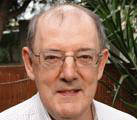Australasia
Satellite Forum - Battle looms over C-band
spectrum sharing
A battle for C-band wireless spectrum is brewing
between those who want to use the spectrum for
new services such as mobile broadband and those
that argue it should be retained for the
satellite sector, where it is currently in wide
use.
The battle is likely to play out at the
International Telecommunication Union’s next
World Radiocommunications Conference in 2015 in
Geneva, according to panellists at the
Australasia Satellite Forum 2013.

Bob Horton, a representative of the Global VSAT
Forum and former chair of the Australian
Communications Authority, said that groups such
as the GVF and others in the satellite industry
will be lobbying hard to prevent the use of
C-band spectrum for anything other than
satellite operations.
“We will put up a very stern fight, all the way
to the WRC 15,” Horton said, noting that many
nations that had previously supported a sharing
of the band were now re-thinking their approach
and likely to withdraw support at the next WRC
gathering.
However, Australian Communications and Media
Authority head of spectrum policy Andrew Kerans
noted that C-band had started out as a
terrestrial band before it gained widespread use
in the satellite sector.
He said there was a strong view that the band
could continue to be shared and would likely be
used for some mobile broadband services.
“It is now a shared terrestrial/satellite band
globally, but in Australia the prime band, the
band we protect [for satellite], is Ku and that
band is clear,” Kerans pointed out.
Kerans suggested that some satellite gateways in
cities might have to relocate in future if
C-band is used for mobile broadband. “It would
be my view that in 20 years time there would be
very few, if any, gateways left in the cities,”
he said.
“I've heard the view from defence, for instance,
that they want to keep C-band. Well Darwin is
one of the fastest growing cities in the country
and there is a facility there that is not very
well protected,” he said.
“It basically boils down to the demand for
spectrum versus whether that spectrum is needed
for in that area, or if the facility is in a
city if it can be coordinated.”
Consultant Simon Twiston-Davies, a former CEO of
the Cable and Satellite Broadcasting Association
of Asia Pacific, said an opening up of C-band
for mobile broadband use could impact on the
region's broadcasters.
“Broadcasters from the Middle East, Pakistan and
all the way down to Australia are absolutely
reliant on C-band and the pressures that are
being brought to bear by the IMT lobby have been
distracting regional broadcasters and domestic
broadcasters, but I think there's going to be a
major fight,” Twiston-Davies told the forum.
“It becomes a very, very worrying issue for the
450 million homes who are receiving TV or pay-tv
of
some sort, or the 900 million homes across the
region who are reliant on it largely for
backhaul of all kinds. So we have to, as an
industry, take this very seriously and bring all
the pressure that can possible be brought to
bear at WRC,” he added.
John Stanton, CEO of Communications Alliance,
said the industry body was in a difficult
position in that it had to represent the views
of both the terrestrial and the space industry
players. “One of the challenges comes down to
defining what highest value means. If highest
value means getting the biggest bang for the
bit, then it's a slam dunk for the terrestrial
players.
“But around the world there are many other
considerations that come to play in terms of
types of services that are provided by C-band
and the amount of embedded investment in
countries that can't afford to replace that
investment rapidly. I think it will be a real
test for the maturity of WRC to see if there can
be a consensus around how to reach a rational
compromise,” Stanton concluded.
Geoff Long, CommsDay